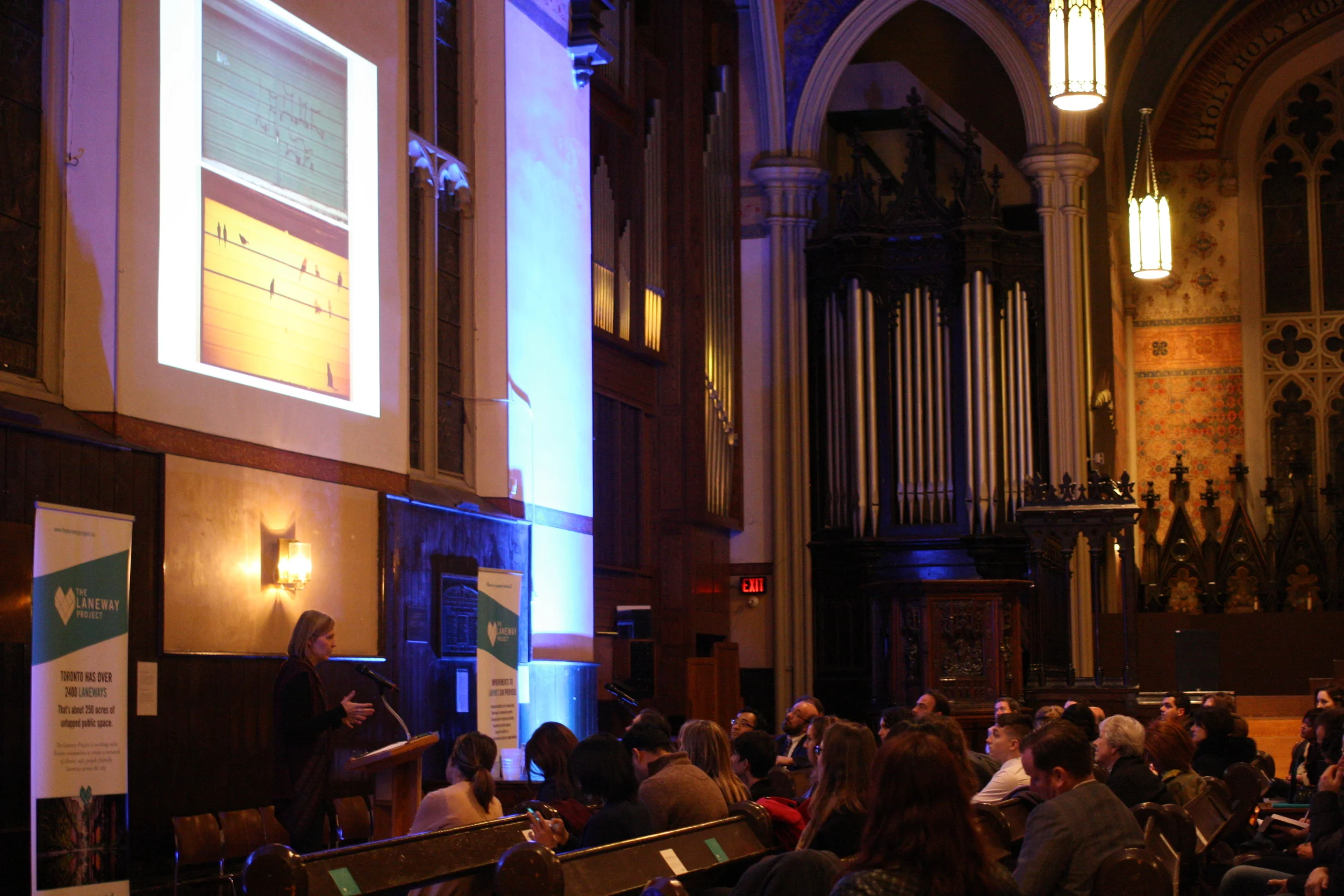
Laneway Confessions 2015
5 Things we Learned
1. Greener laneways are possible. Our friend Roberto Garcia from Ecoquartier Rosemont-La Petite Patrie showed us dozens of examples of laneway greening projects in Montreal. The organization has completed more than 80 laneway greening projects that range from small container gardening to installing permeable pavement.
2. Communities have a lead role to play in laneway revitalization. As most laneways are publicly-owned, the City is responsible for maintaining their safety and maintaining them to a certain standard. At the same time, residents and community groups, as well as businesses and institutions can play a lead role in activating these public space.
3. Laneways are complex. There are many different stakeholder groups that need to be consulted and involved when developing a laneway project. In their improvised presentation, Al Smith & George Millbrandt from the St Lawrence Market BIA presented this with their innovative hub and wheel diagram to demonstrate all the groups that need to me involved.
4. Art can beautify AND combat vandalism. Two Toronto neighbours – Elly Dowson (who is an artist and graphic designer) and Christine Liber (who is an art lover) – decided to counter the graffiti with ‘urban art’. With the help of a local paint store and of course some hard work, they were able to transform their laneway into a beautiful, living art gallery - at almost no cost.
5. Start small. Given the complicated nature of laneways, small projects are a good place to start. They can help to build support for a larger idea and demonstrate to others what is possible. when neighbours, business owners, civic organizations and municipal staff work together.